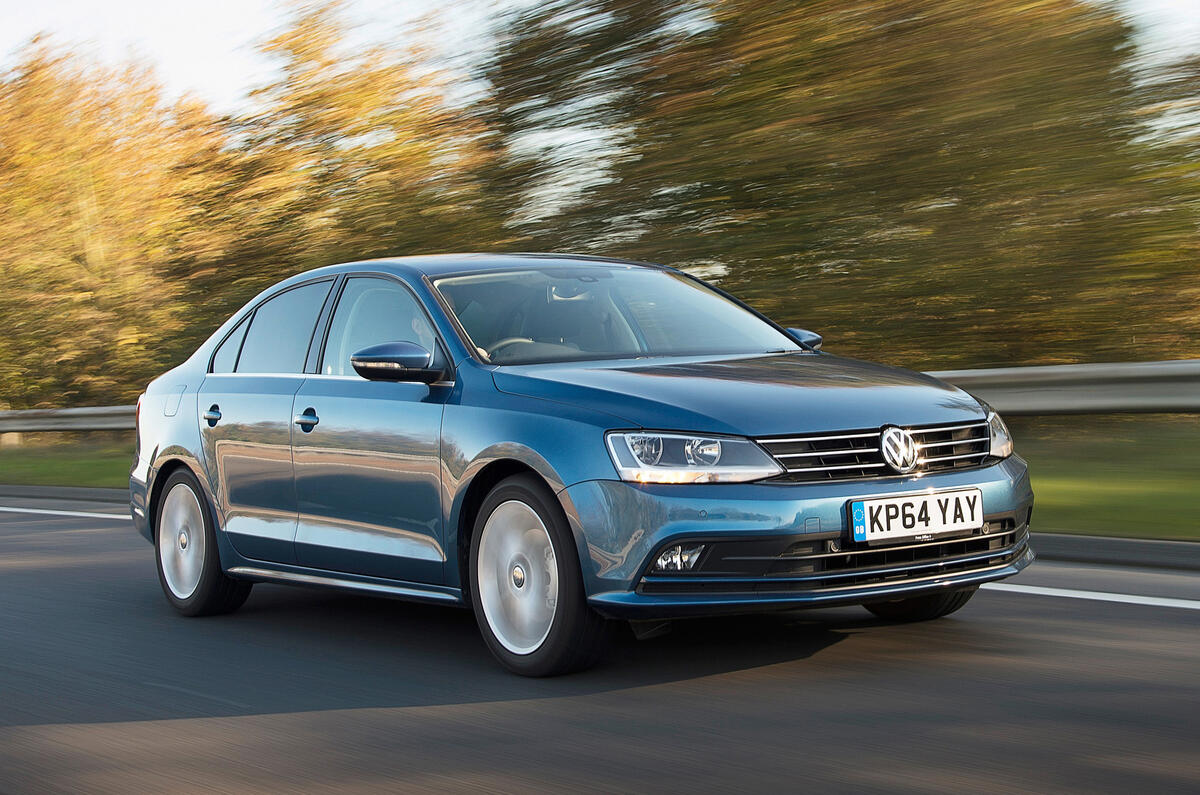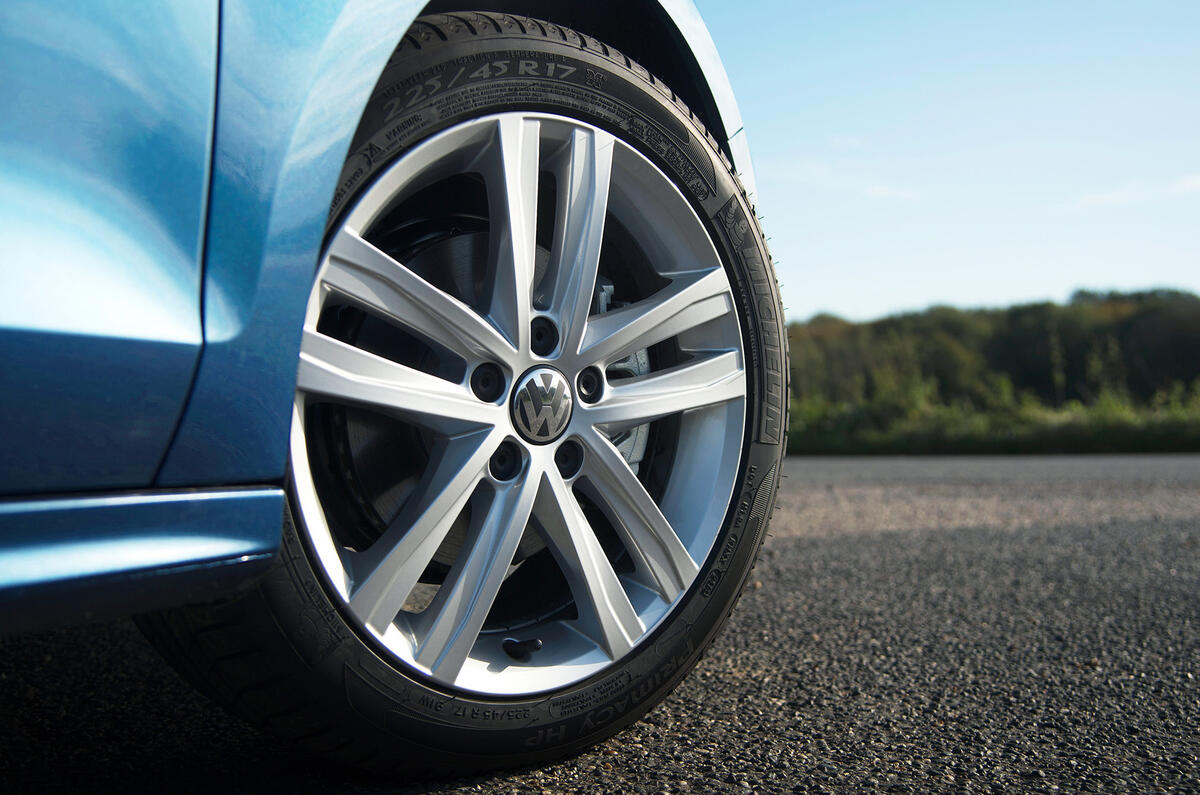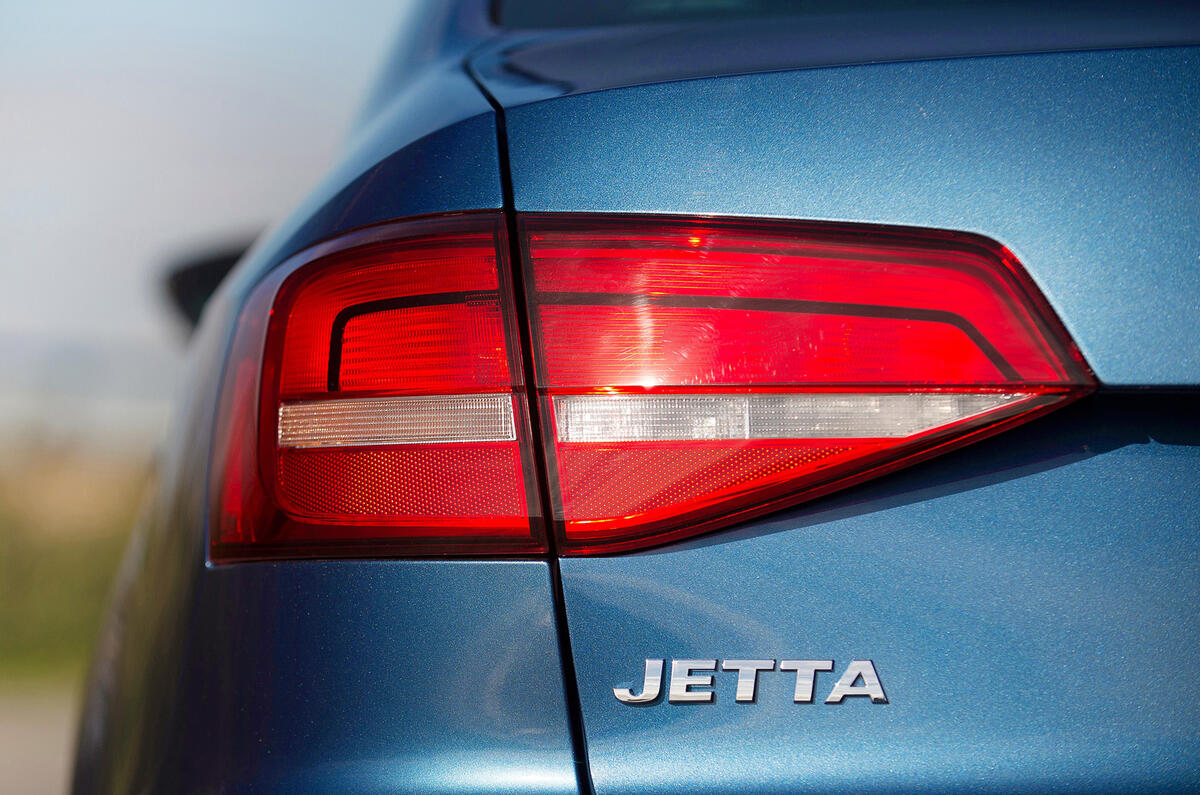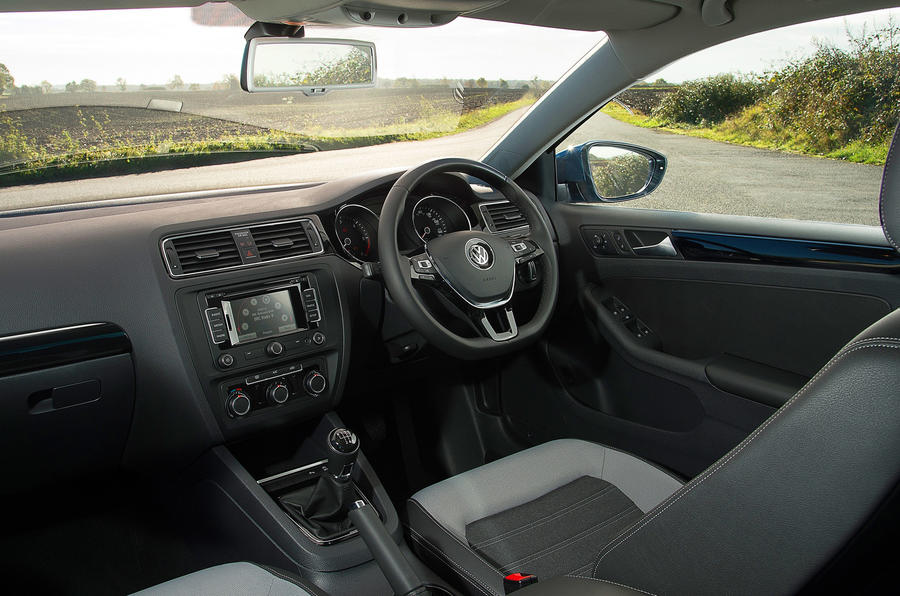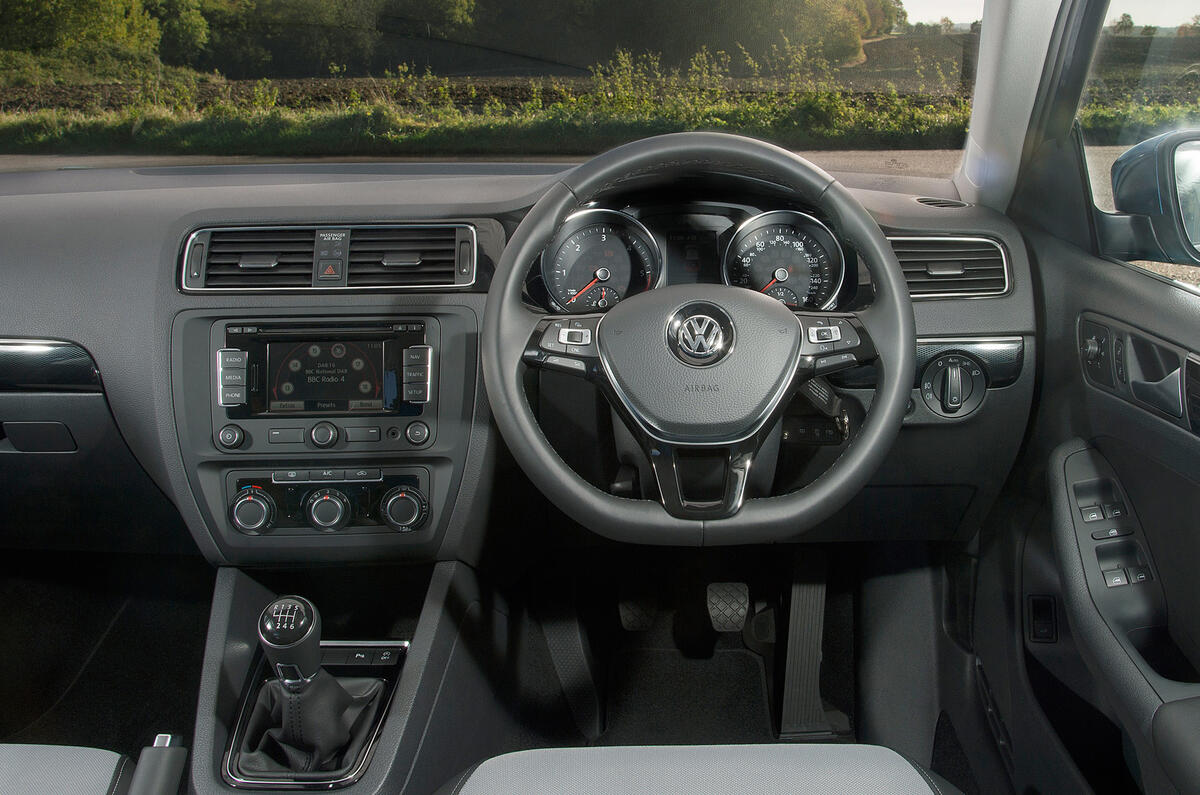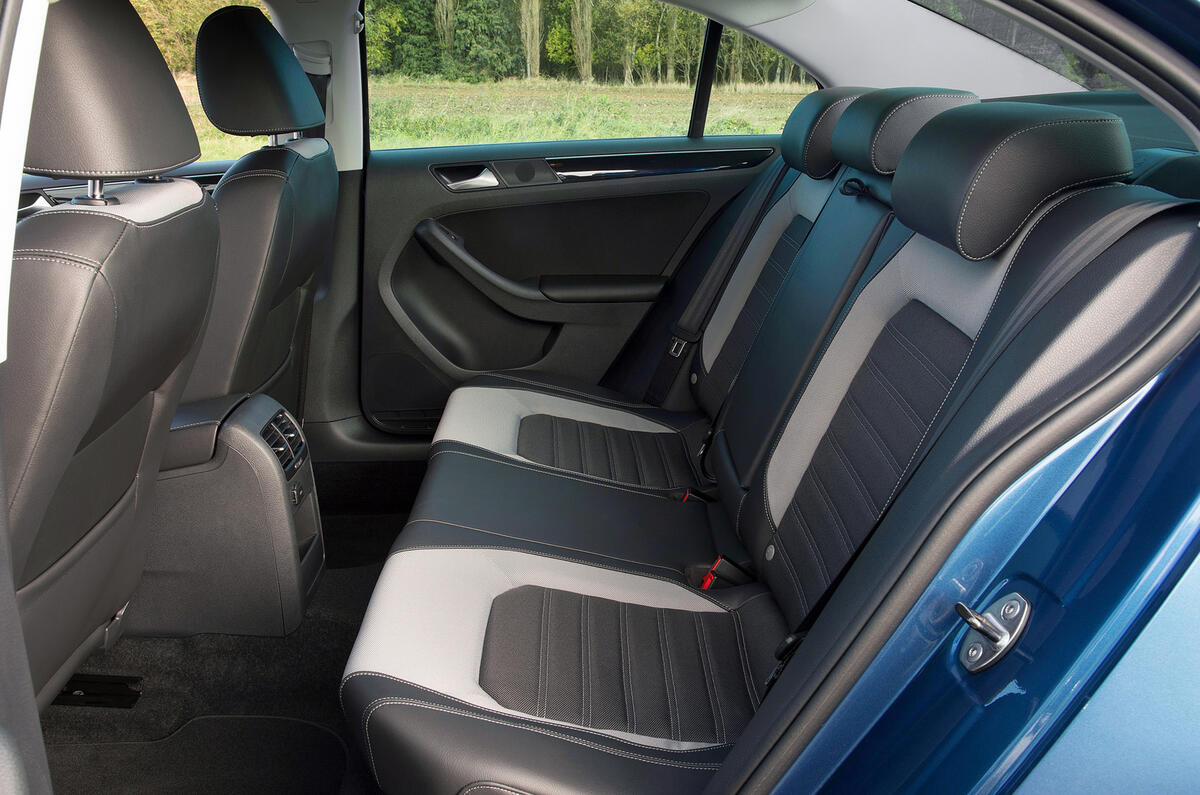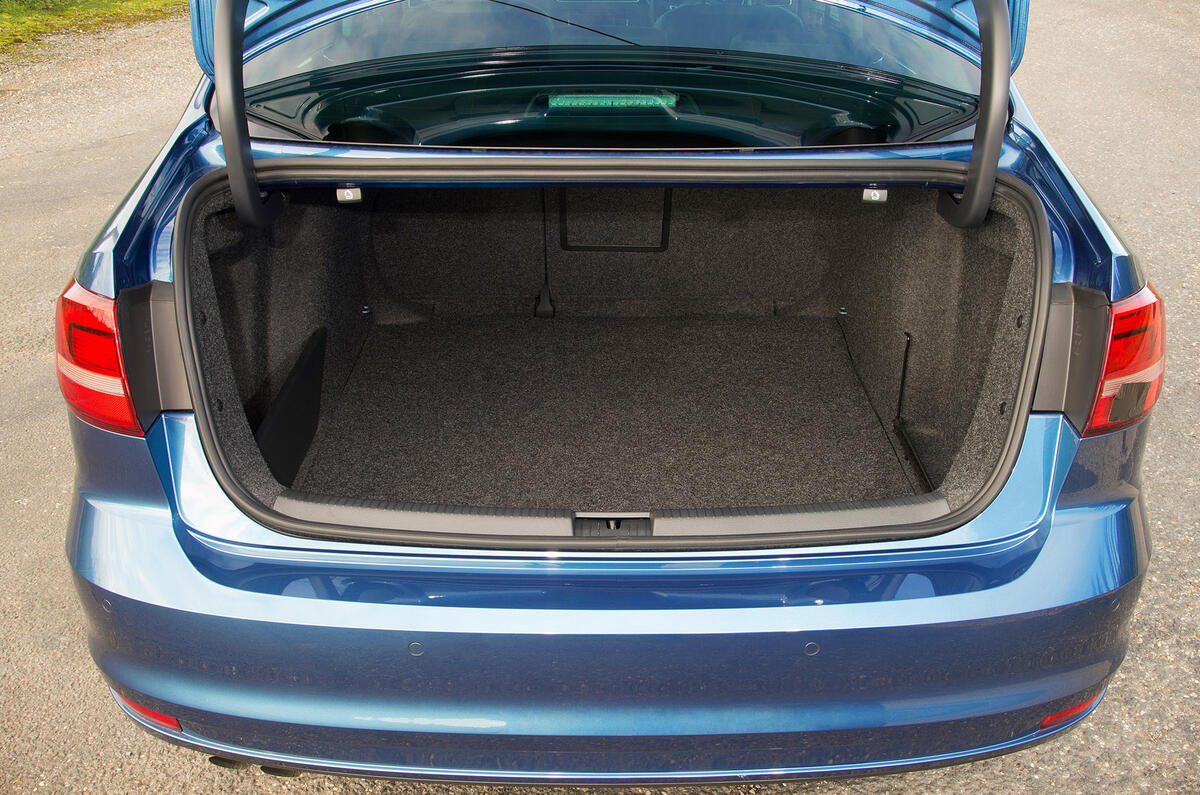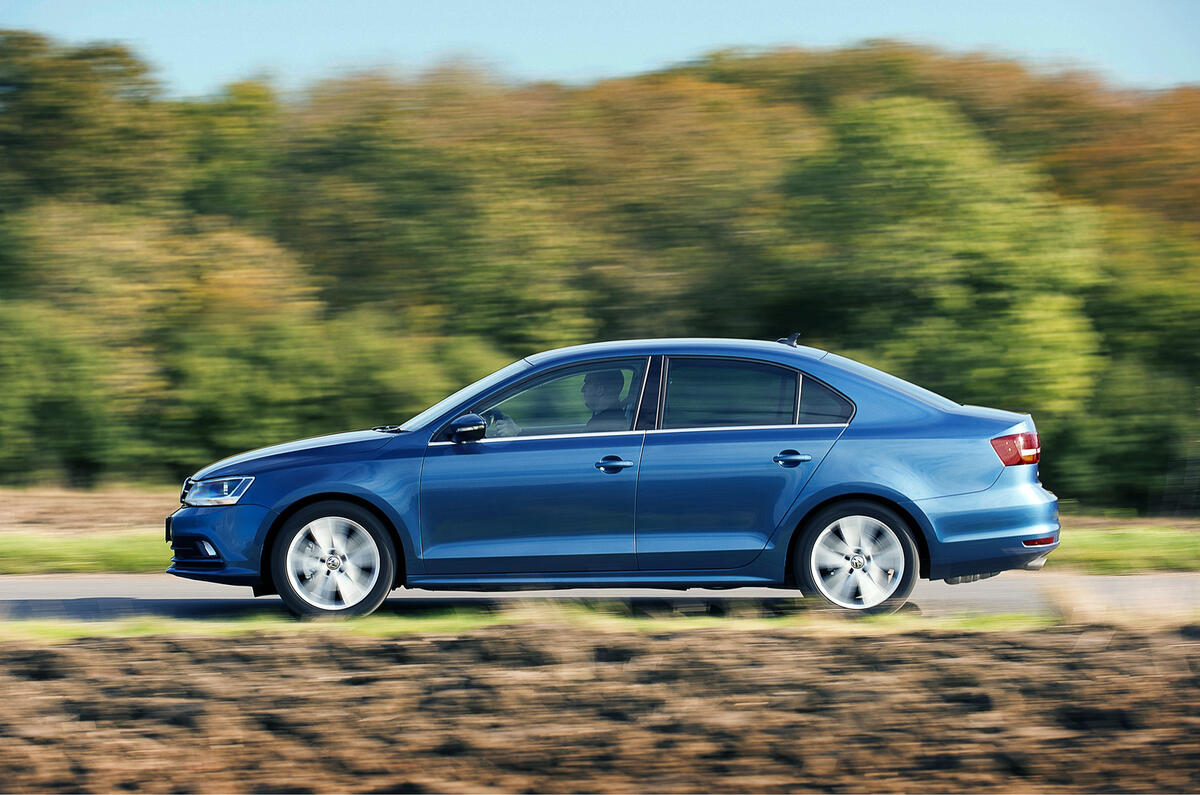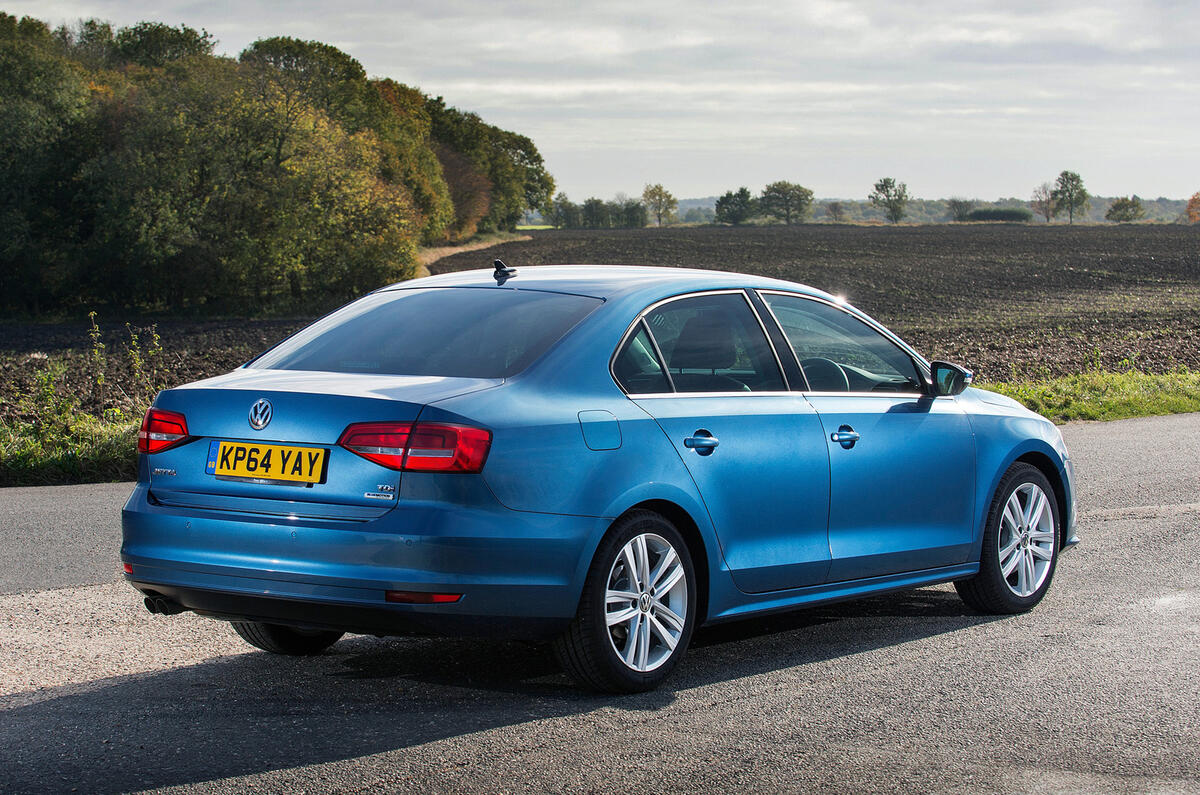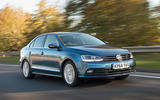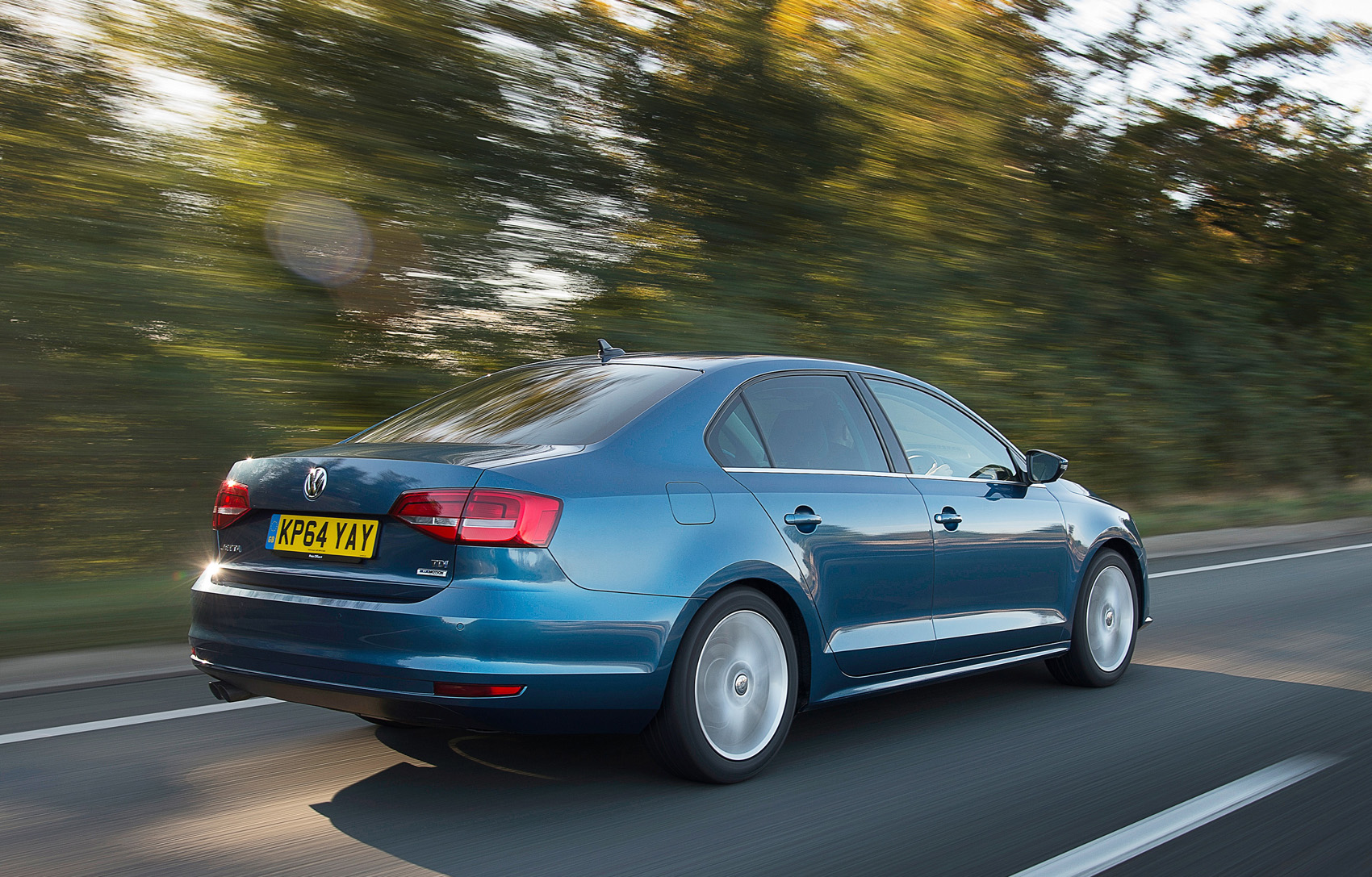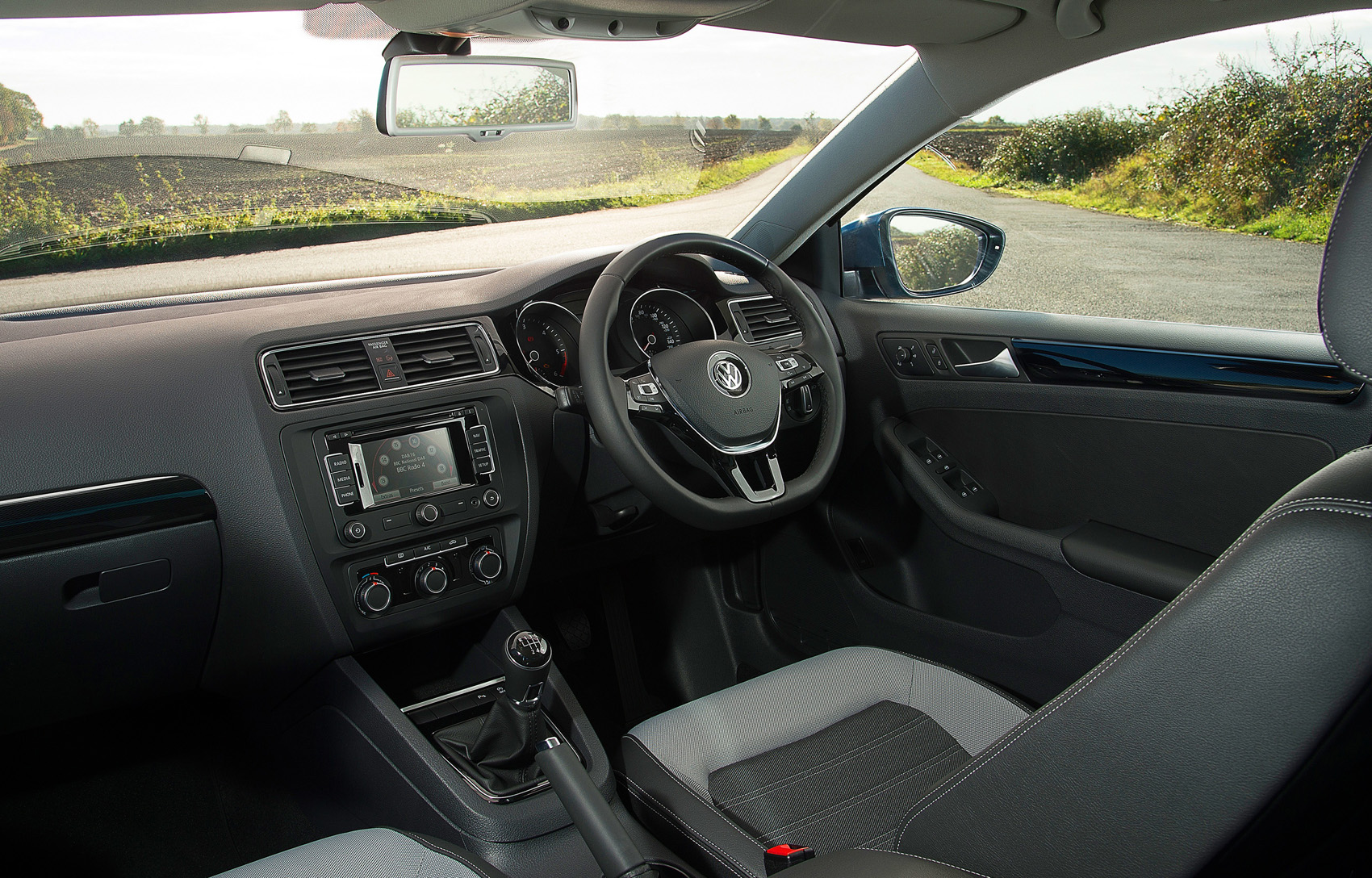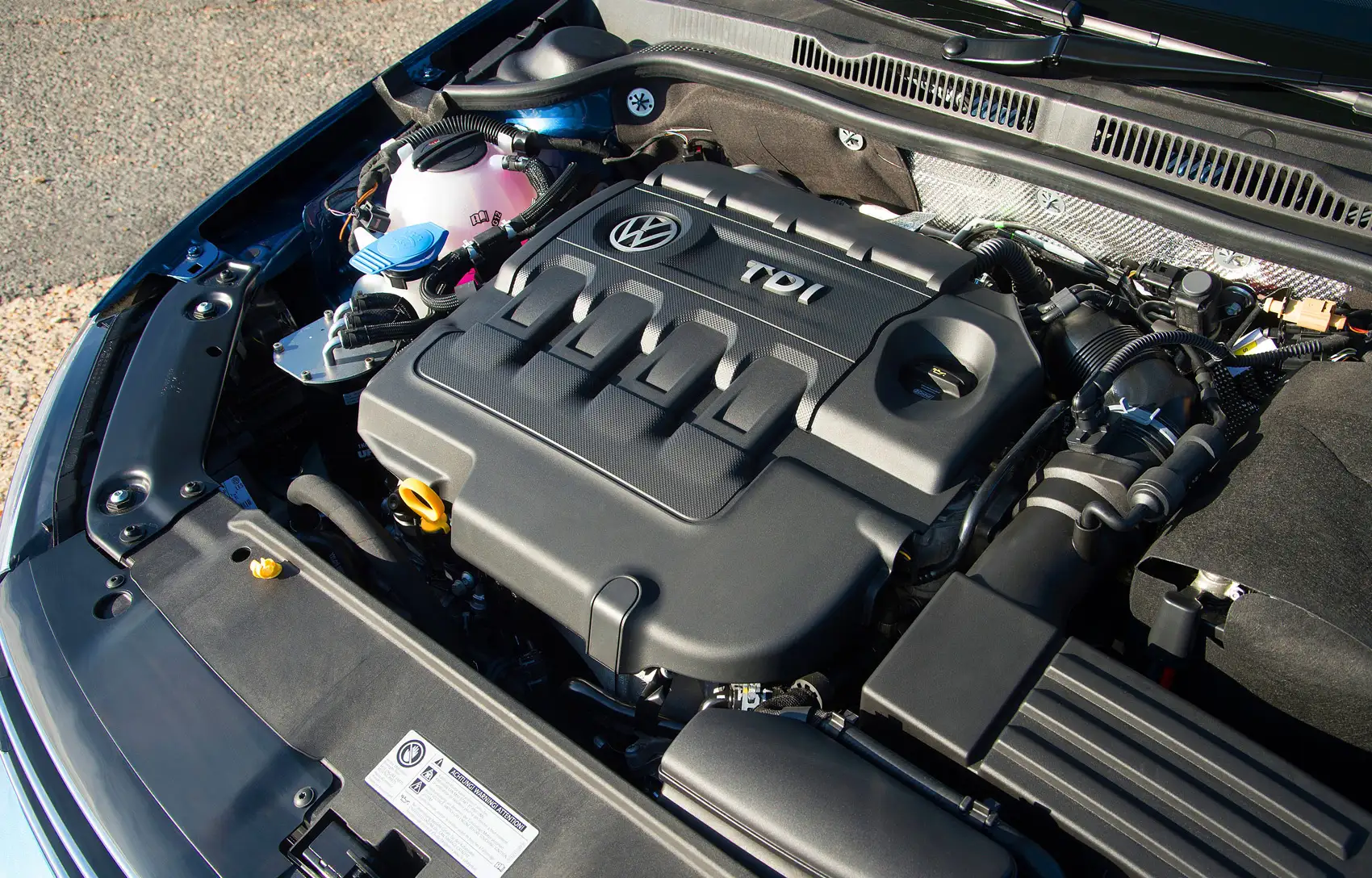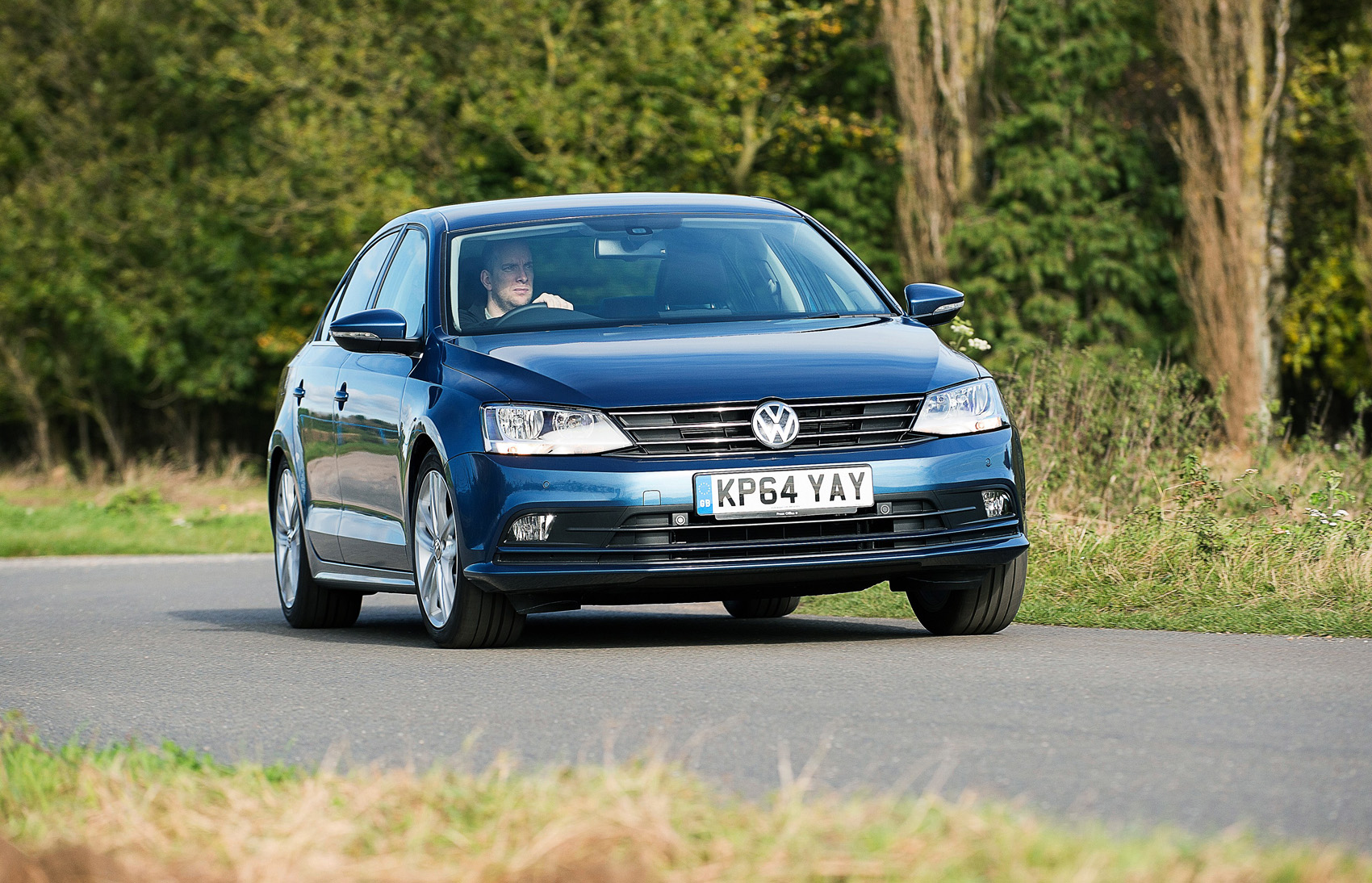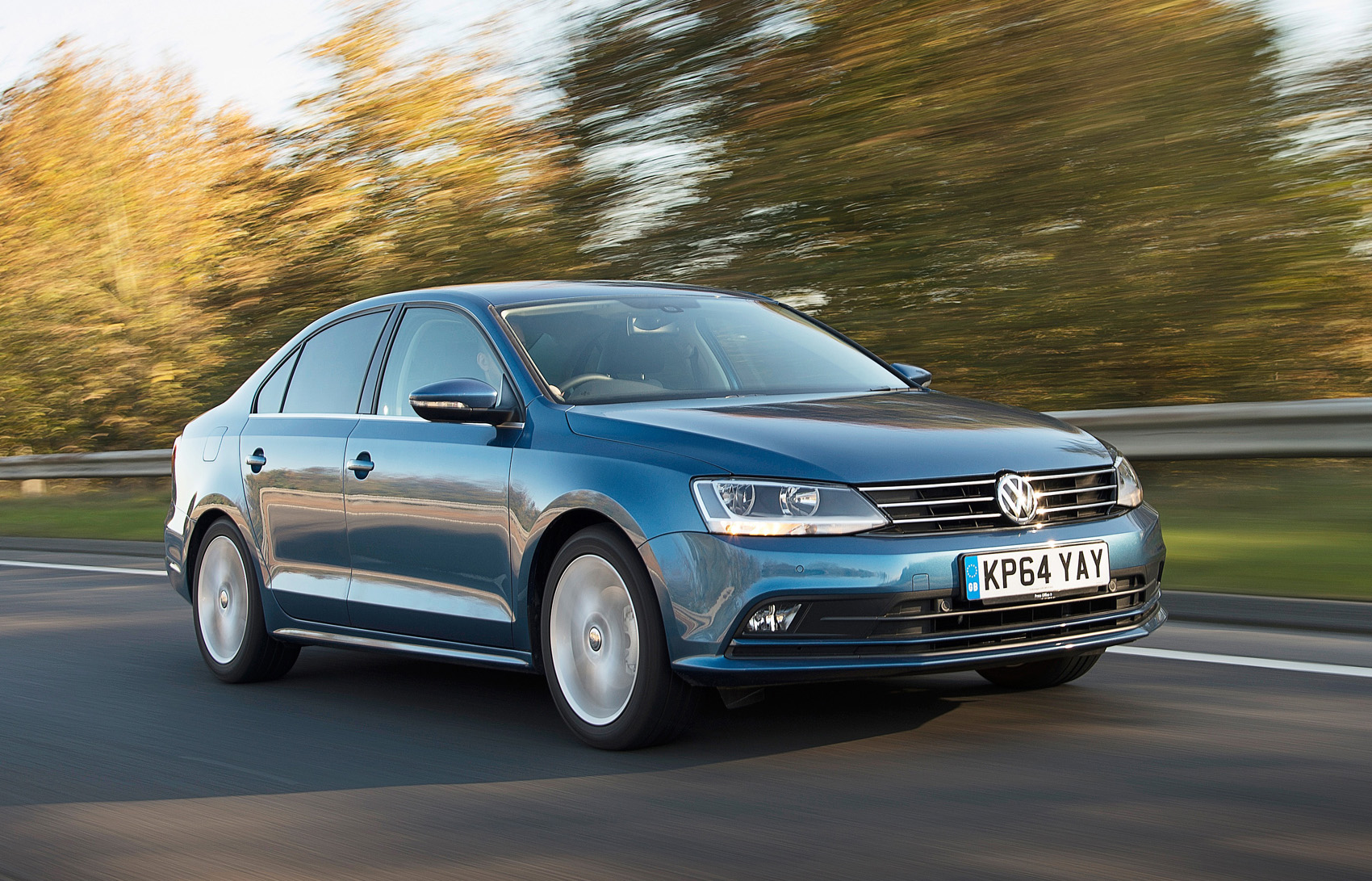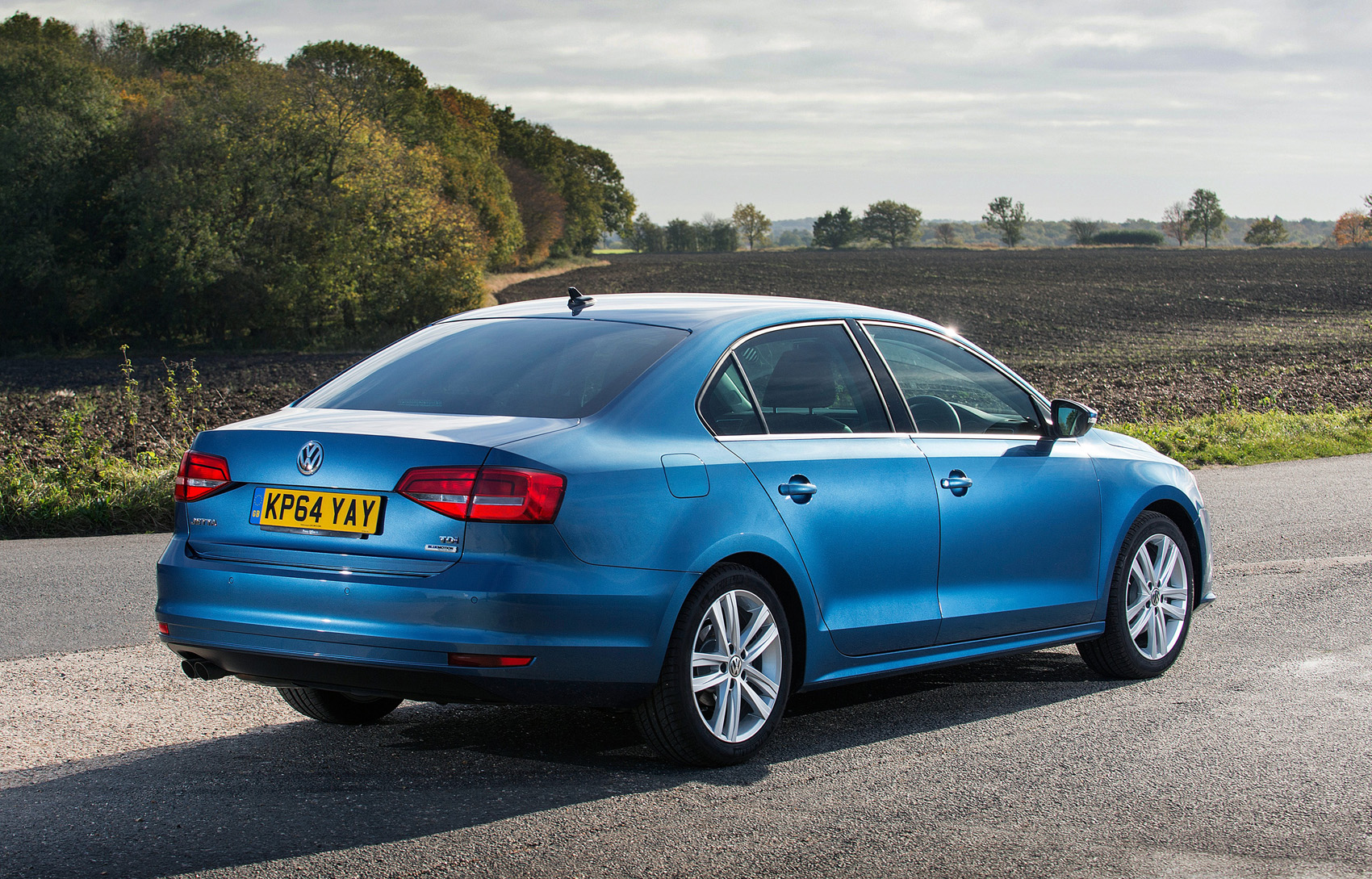Although we would be the first to applaud a car manufacturer who made its interiors novel and interesting, we find it hard to criticise Volkswagen for seemingly wilfully doing precisely the opposite. Everything about the Jetta’s interior – not unlike those of its Volkswagen Passat and Volkswagen Golf sister models – exudes functionality.
Take a pew in the Jetta’s newly designed, relatively flat and firm driver’s seat and you’ll see why. The driving position feels perfectly straight, the pedals are well spaced, the gearlever is in a just-so position and the wheel and seat have ample adjustment. If you can’t get comfortable sitting in this car, we’d suggest you can get comfortable pretty much nowhere.
The rest of the layout is about as nonsense-free as they come. The centre console switchgear for the stereo/navigation and climate systems are angled slightly towards the driver, but not to the extent that you’d notice particularly, unless you were told.
The switches are large, clear and sensibly located, while all the dials are straightforward and easy to read.
The quality of the interior materials is mixed, however. On the upper surfaces the additional thought given to European versions of the Jetta is evident; there are the soft-touch, heavily rubberised plastics and chromed dials that car makers can’t afford not to have on a vehicle in this class. Look lower down the cabin, though, and there are obvious signs of cost-shaving brittle plastics. This is still an above-average-feeling cockpit for this class, but then it’s not a massively distinguished category.
Also above average – well above it – for the class is the interior accommodation in the rear seats and the boot. The Jetta is a 4.6-metre-long car, which would have put it well inside the D segment before the Ford Mondeo, Vauxhall Insignia and current Volkswagen Passat grew by another 20cm. As a result, there’s plenty of rear cabin space for adults, in addition to a 60/40 split/fold rear seat and 510 litres of luggage volume.
There are three trim levels to choose from - S, SE and GT. Entry-level models get 16in steel wheels, hill-hold assist, a post-collision braking system, electric windows, and electrically adjustable and heated door mirrors as standard, while inside there is air conditioning and Volkswagen's infotainment system complete with a 5.0in touchscreen display, DAB radio and SD car reader.
Upgrade to the mid-range SE trim and you'll find 16in alloy wheels, cruise control, lumbar support, and a 6.5in touchscreen infotainment system with Bluetooth and USB connectivity, while the range-topping GT model adds 17in alloy wheels, sports seats, tinted rear windows, sports-tuned suspension, and automatic lights and wipers.



